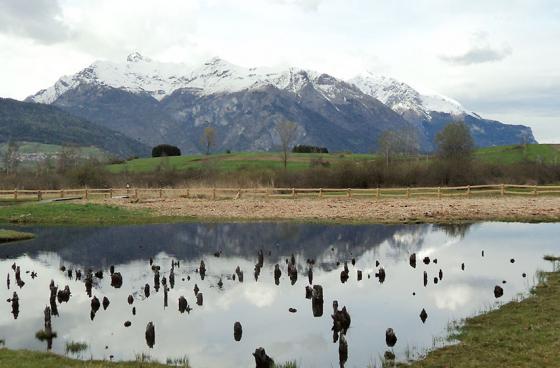11th Experimental Archaeology Conference EAC11
Country
- Italy
Era(s)
EXARC (www.exarc.net) and University of Trento (www.unitn.it) are pleased to announce the 1st call for papers for the 11th Experimental Archaeology Conference (#EAC11), which will be held in University of Trento, Italy, on the 2-4 May 2019.
The University of Trento was founded in 1962 as an institute for social sciences. It was a pioneering institution which housed Italy’s first Faculty of Sociology. Over the following decades, Trento expanded into the sciences and other subjects, and it achieved considerable results in didactics, research, and international relations, according to CENSIS and the Italian Ministry of Education.The didactic and scientific activities are concentrated around three main "areas": the city area, with the Departments of Economics and Management, Sociology, Humanities, the Faculty of Law, and the School of International Studies; the hill area, with the Departments of Civil, Environmental and Mechanical Engineering, Information Engineering and Computer Science, Industrial Engineering, Mathematics, Physics and CIBIO - Centre for Integrative Biology; the Department of Psychology and Cognitive Science and CIMeC - Centre for Mind/Brain Sciences in Rovereto.
#EAC11 venue is the Humanities Department of University of Trento for the first two days, with excursions on the final day.Inaugurated few years ago, the Department (www.lettere.unitn.it) is a modern building located in the historic center at Via Tommaso Gar 14, 38122 Trento TN, a few hundred meters from Piazza Duomo and can be reached in about five minutes on foot from the train and bus station. It hosts the "B.Bagolini" Laboratory (www.laboratoriobagolini.it), the research unit dedicated to Prehistoric Archaeology.
1st Call for Papers
Send your abstracts for papers and posters to eac11@exarc.net before 1 October 2018. We aim to publish proceedings following on the conference.
Experimental archaeology encompasses controlled scientific experiments, as well as a vast array of ancient crafts, living history groups and educational activities for example in open-air museums. When results are related back to the archaeological record, the value of Experimental Archaeology is evident, as the information gained would be impossible to obtain from solely examining original artefacts.
The International Experimental Archaeology Conference encourages the exchange and sharing of new work in experimental archaeology. The #EAC11 aims to join scholars from around the globe in order to promote discussions, to improve knowledge, and to increase awareness to the different trends developed by the research world.
Eligible papers and posters should respect the following:
a) The scope of experimental archaeology as scientific research.
b) Projects which strongly relate to the archaeological record (original sources and end results).
c) Improving ways of promoting experimental archaeology in academic research.
d) How to communicate experiments to the academic community and to the public.
Experimental archaeology is often one of the most popular and exciting aspects of archaeological research: Theories of past agricultural, manufacturing or construction techniques can be tested by using the same materials and skills which we think were used in the distant past. Experimental archaeology involves testing a theory about the past, and is where these reconstructions are carefully designed to be as close as possible to original techniques and processes, and the results published for wider attention.
Laboratory experiments provide a sound understanding of scientific principles through the careful control of variables; one could test many factors about source materials, rendering conditions and end products within the controlled conditions of a laboratory. Each experiment could involve holding all but one variable constant at any one time. The rendering process could be quite well understood, in physical terms, from such experiments and some conclusions might be reached that were relevant to archaeological interpretation. However, a gap is left between such laboratory work and how such processes may have been achieved in the past, with a limited range of materials, technologies and a lesser control upon the environment.
Experimental archaeology comes into its own at this point. Hypotheses can be tested with authentic materials and in a range of environmental conditions that aim to reflect more accurately ‘real life’ or ‘actualistic’ scenarios. Actualistic experiments test out hypothetical scenarios using potentially authentic materials and conditions. In the latter case, unpredictable phenomena are often given more opportunity to act, thus enabling the refinement of hypotheses and archaeological interpretation. Actualistic experiments should be no less rigorous than laboratory ones, but that rigour may be based upon a different set of criteria. Such experiments investigate activities that might have happened in the past using the methods and materials that would actually have been available. This is not to say that all materials and methods need to be authentic in experimental archaeology, but certainly those pertinent to the hypothesis.
(Modified from "Introduction to Experimental Archaeology" by Alan K. Outram in World Archaeology 40:1-6, 2008).
See the official conference website for up to date information: https://exarc.net/eac

